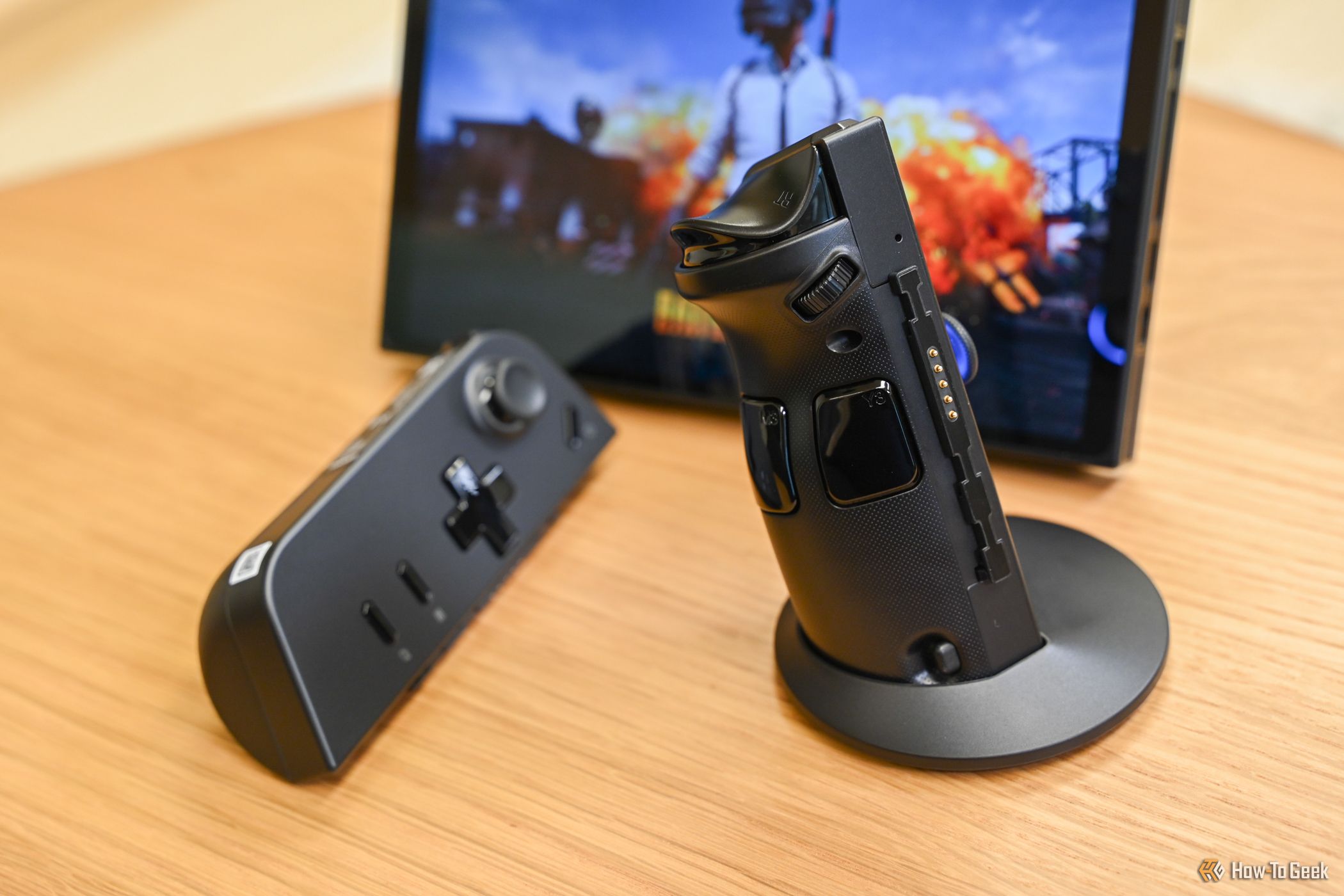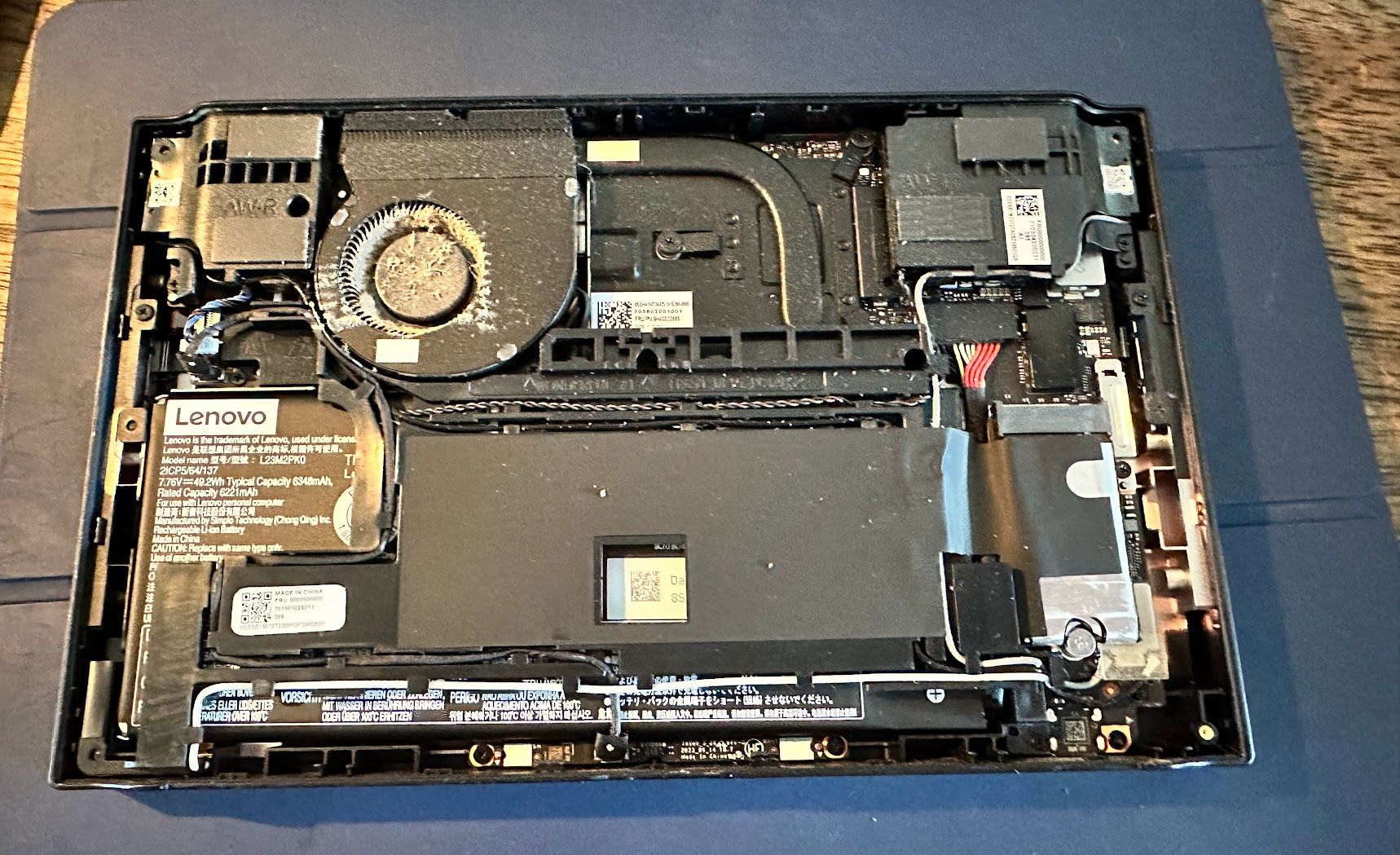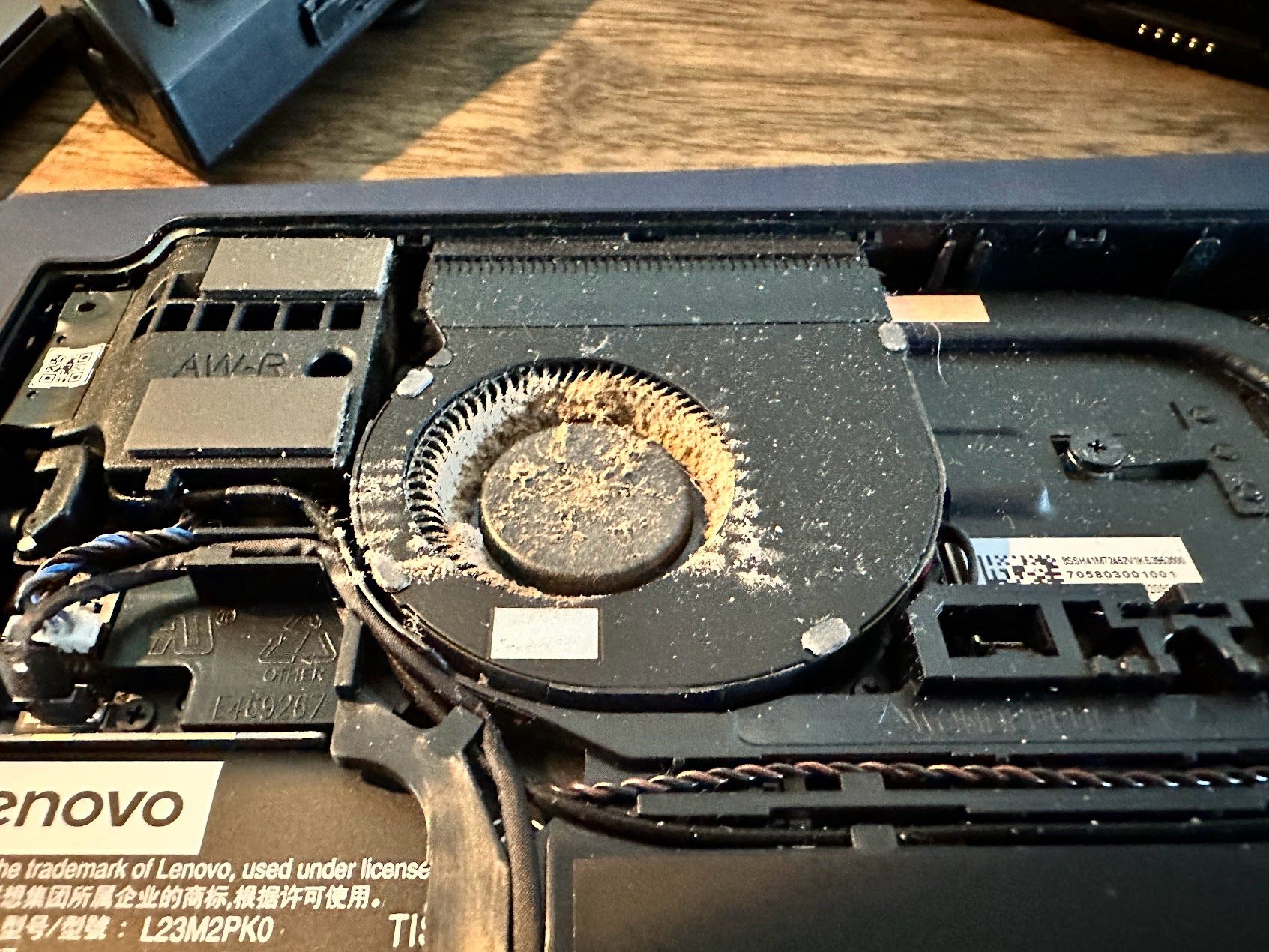Key Takeaways
- Updated BIOS caused heating issues on my Lenovo Legion Go handheld PC, fixed it by changing thermal policy in BIOS.
- Disabling CPU turbo boost and cleaning the clogged fan dropped temperatures by twenty degrees centigrade.
- Overheating issue on my PC was due to a clogged fan, easily fixed in five minutes by cleaning out dust buildup.
My handheld PC has been giving me thermal headaches for a while now, but when things finally came to a head, the cause was predictable in retrospect, but surprising in reality.
My Handheld PC Was Running Worse Every Day
I bought my current handheld PC, the Lenovo Legion Go, used from someone on Facebook Marketplace. Less than a year old, and completely spotless upon inspection, it was a pretty good deal. The machine ran like a dream for months, but then about three weeks before sitting down to write this, my Legion Go started ramping up its fan, and soon would thermal throttle and turn itself off even in its normal performance mode, much less its maximum TDP mode.

Lenovo Legion Go
Although not without its issues, the Lenovo Legion Go’s large display, removable controllers, and versatility make it a top choice among PC gaming handhelds.
I Tried Every Software Trick in the Book
This happened right after I finally updated to the latest BIOS, and checking online it seemed that the new BIOS defaulted to a temperature management policy that was causing Legion Gos to overheat for lots of people. So I went into the BIOS, flipped the thermal policy back, and my handheld ran properly again. At least for another week or so.
Since the BIOS tweak had ostensibly fixed the issue, I assumed it was a settings or driver issue, which led me down a rabbit hole of Legion Go optimization guides. One of which was disabling the turbo mode for the CPU. This is actually a tweak I kept, since games on this handheld are rarely CPU-limited, and stopping the CPU from boosting all the way to 4.5Ghz for no performance gain really helped bring temperatures down, and it cut down on power draw. So that was a happy accident.
Unfortunately, my Go was still overheating and shutting down in its highest power mode, even if the fan was running at full blast. No matter how many power and heat management tweaks I tried.
Surely It Can’t Just be a Dirty Fan?
Now, as you’ve probably figured out, the real issue was that the fan was too clogged with dust to do an effective job. In my defense, this handheld was barely used by the previous owner (or at least so he said) and I don’t use it in a dusty environment. I’m also hesitant to open up a device unless I have a good reason, and in my experience it takes much longer for fans to accumulate enough dust for it to become a problem.
Add to this that neither of my Nintendo Switches have ever had thermal issues despite thousands of hours of many years of use, and so, understandably, my first instinct was not to assume it was a dirty fan. Besides, I could feel what I thought was plenty of air blowing out of the exhaust port.
It’s Worse Than I Could Imagine
The good news is that opening a Legion Go could not be easier. Just six small Philips head screws, and a plastic spudger (I just use a guitar pick) and its insides are laid bare. If I knew it was this easy, I might have led with it, if I’m being honest.
While I expected the fan to be somewhat dusty, I could never have predicted just how absolutely clogged up it would be. I was also confused as to what this fine, apparently uniform powder is. Again, the device was absolutely spotless on the outside when I bought it, but this looks like it was run inside a flour factory.
Nonetheless, with the help of a (very) small brush, I methodically cleaned out each individual fin, and carefully used a handheld vacuum cleaner to suck out this fine dust. Satisfied that I’d gotten it all out, I put the Legion Go back together, and lo and behold, the temperature dropped like a stone. How much? A whole twenty degrees centigrade according to the included Lenovo monitoring software!
Now it’s happily running well below the throttling temperature at maximum wattage, and in future I’ll know fixing this issue is a five-minute job at most.



